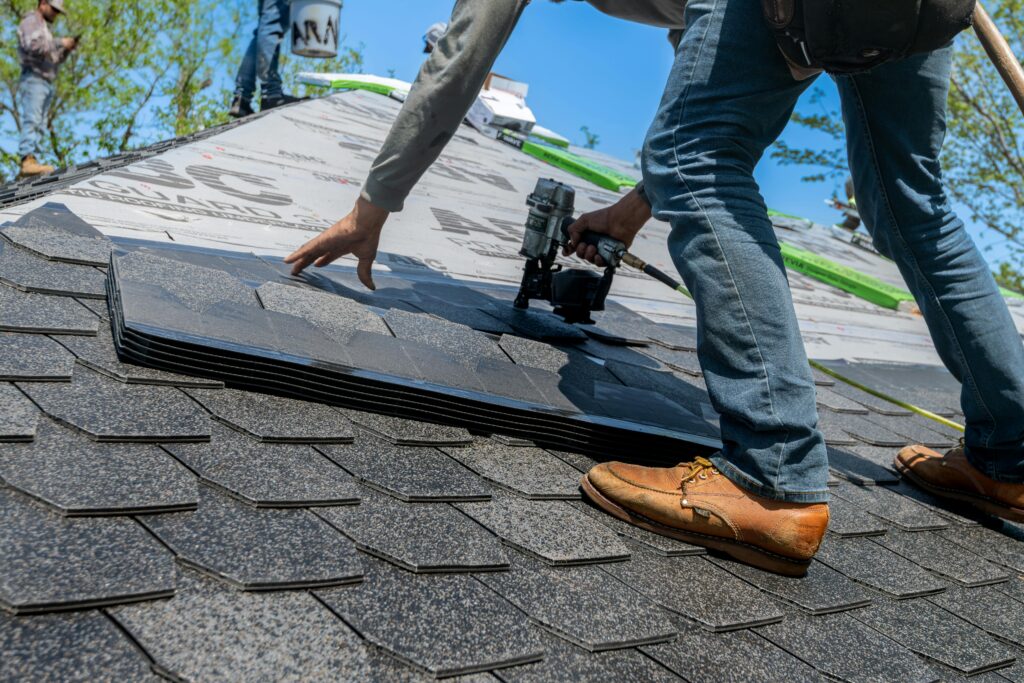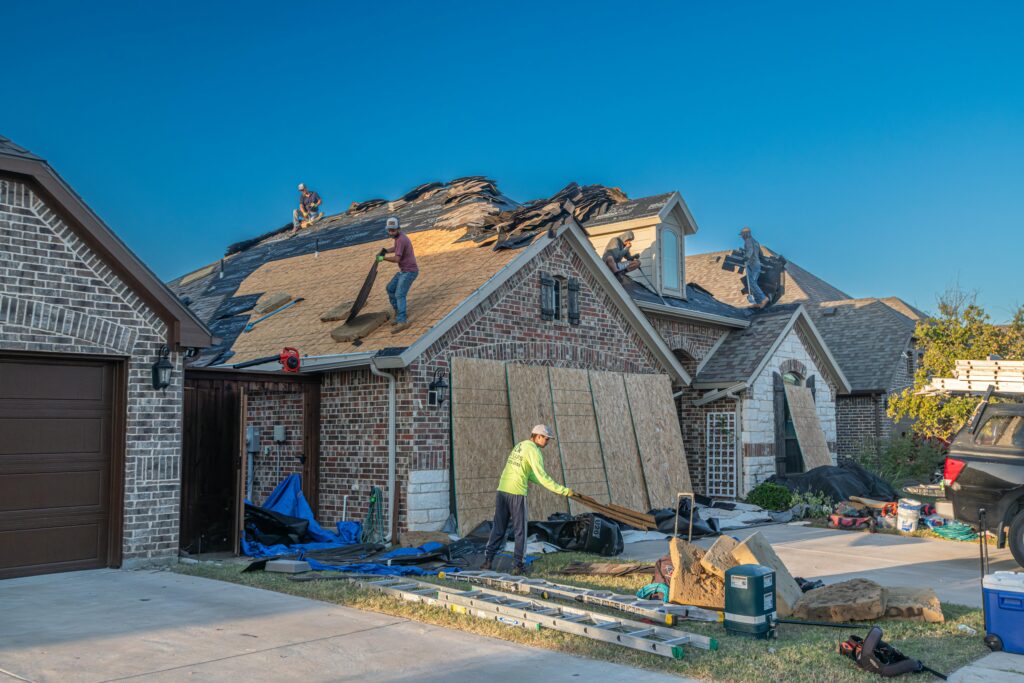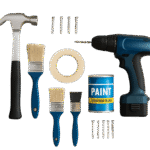Your roof is like the silent guardian of your home — it faces scorching sun, pounding rain, and heavy snow, all while keeping you and your family safe. But like all things, it has a lifespan. Ignoring roof issues can lead to expensive repairs, structural damage, and even health risks from mold and leaks.
So, how do you know when it’s time to stop patching things up and start thinking about a full roof replacement? Let’s go step-by-step and look at the clear signs that say, “It’s time.”

1. Your Roof’s Age Is Catching Up:
The average asphalt shingle roof lasts about 20–25 years, while metal, tile, or slate roofs can last longer. If your roof is nearing or past its expected lifespan, replacement should be on your radar. Even if it looks fine from the ground, hidden wear and tear can mean it’s only a matter of time before problems start.
Pro Tip: Check your home records or talk to the previous owner to confirm when your roof was installed.
2. Curling, Buckling, or Missing Shingles:
Shingles are your roof’s first line of defense. Over time, they can start to:
- Curl upward or downward — a sign of weathering and poor ventilation.
- Crack or break due to extreme temperatures.
- Go missing altogether after strong winds.
If you see multiple areas with damaged shingles, repairs might not be enough. A roof replacement ensures the entire surface is protected.
3. Granules in Your Gutters:
Asphalt shingles have a protective coating of granules. When they start wearing out, those granules wash off and end up in your gutters. If you notice a lot of small, sand-like particles during gutter cleaning, it’s a strong sign your roof is aging and losing its protection against UV rays and weather.
4. Daylight Coming Through the Attic:
Take a flashlight and head to your attic during the day. If you can see sunlight streaming through roof boards, that means there are gaps or holes. This not only lets in light but also water, leading to leaks and potential mold growth. In many cases, widespread light penetration is a sign that the roof’s structure is compromised.
5. Frequent Leaks and Water Stains:
A single small leak can often be repaired. But if you’re dealing with leaks every rainy season, or if you notice water stains spreading across ceilings and walls, it could mean your roof’s underlayment or decking is failing. This is often more cost-effective to fix with a complete replacement rather than repeated patch jobs.
6. Sagging Roof Deck:
A roof should have a straight, solid appearance. If you notice sagging areas, especially in the middle, it can mean the underlying decking or rafters are weakened by moisture or rot. This is a structural concern — the longer it’s ignored, the higher the repair costs.
7. Moss, Mold, or Algae Growth:
A little moss on a shaded roof isn’t unusual, but excessive growth can trap moisture, speeding up deterioration. Mold and algae can also indicate moisture problems beneath the shingles. Cleaning might help temporarily, but if the growth is severe and widespread, it’s often a sign of deeper damage.
8. Rising Energy Bills:
If your heating and cooling costs keep increasing, your roof might be part of the problem. Damaged or aging roofing materials can reduce insulation efficiency, letting heat escape in winter and enter in summer. A new roof with proper ventilation and insulation can help lower energy costs.
9. Storm Damage That’s Beyond Repair:
Severe storms can tear off shingles, puncture the roof with debris, or cause structural damage. While minor storm damage can be fixed, major destruction — especially if water has entered the home — often requires starting fresh with a new roof.
10. Neighbors Are Replacing Their Roofs:
If your home was built around the same time as your neighbors’ homes and you notice many of them getting roof replacements, it’s worth scheduling an inspection. Chances are, your roof is facing similar wear and tear.
11. Damaged Flashing:
Flashing is the metal or waterproof material around chimneys, skylights, and vents. If it’s rusted, cracked, or pulling away, water can easily get into your home. While flashing can be repaired, widespread damage often points to a failing roof system.
12. Roof Feels Soft or Spongy Underfoot:
If you walk on your roof (carefully, or have a pro do it) and it feels soft, it could mean moisture has reached the underlying decking. This is a serious sign that replacement is likely needed.
13. Poor Past Repairs:
If your roof has been patched multiple times over the years, especially by different contractors using mismatched materials, the overall structure could be compromised. Inconsistent repairs can lead to uneven wear and more frequent problems.
How to Confirm You Need a Replacement:
While these signs are strong indicators, the best way to know for sure is to schedule a professional roof inspection. A licensed roofer can check for:
- Hidden leaks and moisture damage
- The condition of underlayment and decking
- Ventilation issues
- The structural integrity of trusses and rafters
Repair vs. Replacement — How to Decide:
You might be wondering: Why not just repair instead of replace?
Choose repair if:
- Damage is minor and isolated
- Roof is less than 10 years old
- Structure is still sound
Choose replacement if:
- Roof is over 20 years old
- Damage covers more than 30% of the surface
- Underlying structure is compromised
Benefits of Replacing Your Roof:
- Better Protection: New shingles and materials mean fewer leaks and less worry.
- Energy Efficiency: Modern roofing offers better insulation.
- Higher Home Value: Boosts curb appeal for resale.
- Long-Term Savings: Fewer repairs and lower maintenance costs.
Roof Replacement Timeline:
A full roof replacement typically takes 1–3 days for most homes, depending on size and complexity. The process includes:
- Removing old shingles and materials
- Inspecting and repairing the decking
- Installing underlayment and flashing
- Adding new shingles or roofing material
- Final cleanup and inspection

How Much Does Roof Replacement Cost in the US?
On average:
- Asphalt shingles: $5,000–$12,000
- Metal roofing: $8,000–$20,000
- Tile roofing: $10,000–$25,000
Costs depend on your roof size, materials, and local labor rates.
Preventing Early Roof Replacement:
To make your roof last as long as possible:
- Schedule annual inspections
- Clean gutters regularly
- Remove debris after storms
- Trim overhanging branches
- Ensure proper attic ventilation
Conclusion:
A roof replacement isn’t just another home project — it’s a major investment in your home’s safety, comfort, and value. If you notice several of these warning signs, don’t delay an inspection. A timely replacement can save you thousands and give you peace of mind.
Actionable Tip:
Mark your roof’s installation date on your calendar and set a reminder for an inspection every spring or after major storms.
Content Source:
This article is based on roofing industry reports, US home maintenance guides, and expert contractor advice.
Social Media Reference:
Follow us for more home care tips that protect your investment.
Blogs Reference Theory:
Inspired by home improvement blogs that break down maintenance into practical steps.
Posts Reference:
Connects with my earlier posts on Gutter Guards and Energy-Efficient Windows.
Popular Posts:
Disclaimer:
This article is for informational purposes only. Always hire a licensed roofing contractor for inspections and replacements.
Contact Info:
Reach us through our website’s contact page for questions, collaborations, or expert recommendations.

Comments are closed.